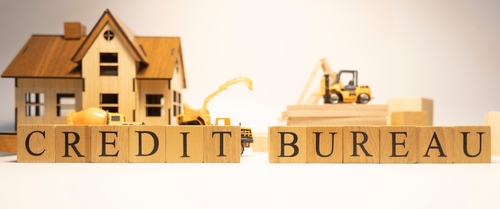Many people face a common issue of errors and inaccurate data on their credit reports. However, your chances of receiving a new loan may rise if you successfully identify and correct these errors. As far as lenders are concerned, they usually go through a CIBIL report check to decide if they should grant financing. Since your credit report represents your creditworthiness, all its information must be correct.
Let us understand more about Credit Reports
A credit report contains a detailed list of your credit accounts and payment records. The lender will ask for access to your credit reports concerned bureaus, whether you’ve filed for a mortgage, vehicle loan, or personal loan. In addition, credit reports can determine the eligibility of applicants for loans, credit cards, leases, insurance, and jobs.
Checking your credit report regularly is a crucial financial habit that everyone should adopt. Your credit report contains vital information about your credit history, including loans, credit card accounts, and payment patterns. By reviewing your credit report frequently, you can identify any errors, inaccuracies, or signs of potential identity theft. This proactive approach allows you to address any issues promptly and protect your credit score.
What’s your credit reports include?
- Personally sensitive data like social security numbers, birth dates, addresses, contact information, and employers.
- Public documents like court decisions or child support responsibilities.
- Credit accounts, including account balances, credit limits, payment histories, and account opening and closing dates.
Why should you check your credit report?
Your credit report provides a record of your credit management history. Lenders may get the wrong impression if your credit report contains errors. For example, a lender may deny your credit card or low CIBIL personal loan application or charge you a higher interest rate if your credit report has errors. You might also need help finding employment or a place to live in some situations.
How do you identify errors in your credit report?
Once you get your credit report, you can opt for a CIBIL report check. Then, you only need to look for the following things to identify errors in your credit report.
- Errors in your data, such as an incorrect mailing address or birthdate.
- Incorrect information on credit card and loan accounts, such as when a timely payment is reflected as late.
Accounts listed on your credit report that you never opened could be a warning sign of identity theft.
A credit bureau must keep accurate information about a credit account in the credit report. For instance, if you have a credit card and have missed payments in the past, clearing the bill in full or closing the account won’t do away with the negative history.
How to Identify and Fix Errors to Produce Accurate Credit Reports
Fixing common errors on your credit report is crucial for maintaining a healthy financial profile. A credit report plays a significant role in determining your creditworthiness and affects your ability to secure loans, mortgages, or even favorable interest rates. Identifying and rectifying common errors, such as incorrect personal information, inaccurate payment histories, or unrecognized accounts, is essential to ensure the accuracy and fairness of your credit report
Any information on your credit report that must be corrected can be disputed. In addition, you can request free error correction from the credit bureaus.
Step 1:
Prove your claims
Gather all relevant credit account statements, receipts, and other paperwork, as they might be necessary to support your claim.
Step 2:
Get in touch with the credit bureaus
Credit bureaus provide forms for updating information and fixing inaccurate information. To fix errors, you first need to complete the form. The credit bureau must look into your claims before changing the data on your credit report. Your claim will be verified by the lender who provided the information. The credit bureau will update your credit report if the lender acknowledges the error. The credit bureau will not change your report if the lender verifies that the information is accurate.
Step 3:
Discuss with the creditor
You can speed up the procedure by informing the creditor about the problem. Then, request that they check their records and provide the credit bureaus with any changes.
Step 4:
Take your case to the next level
Request to talk with a supervisor at the credit bureau or the financial institution if you’re dissatisfied with the inquiry results. Financial organisations subject to federal regulation must have a process for resolving customer complaints. It would help to include a third-party dispute-resolution body to take your case to the next level.
Step 5:
Include a customer statement.
Add a brief remark to your credit report describing your reasons for disappointment if the credit bureau confirms the accuracy of the information. The addition of a consumer statement to your credit report is free.
Read More: UNRAVELING FINTECH SOFTWARE DEVELOPMENT COMPANIES: HOW THEY SHAPE FINANCE
Why accurate credit reports are important
Lenders use your credit score to determine your likelihood of repaying debts whenever you apply for a credit card or a loan. Therefore, it is important to keep checking your credit report for issues or errors so that you can challenge them and have them fixed.

